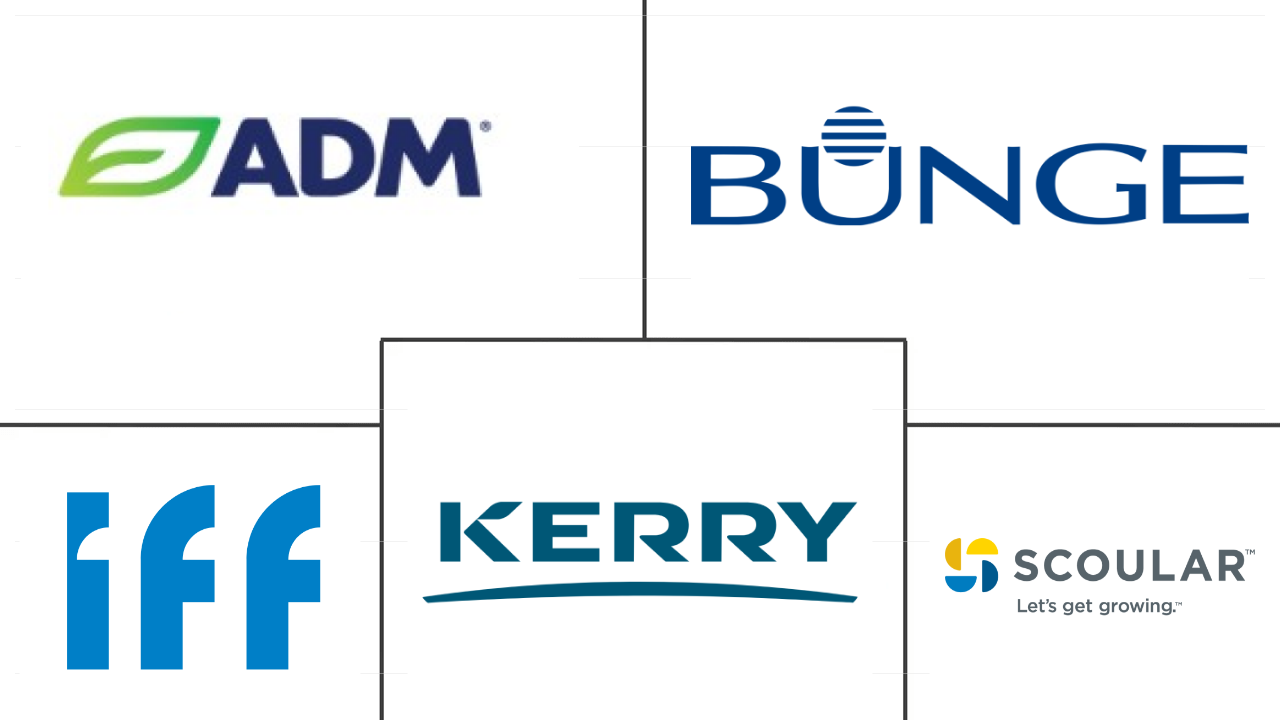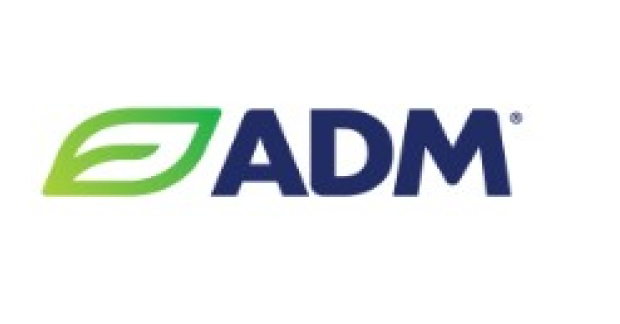Market Size of united states pea protein Industry
| Icons | Lable | Value |
|---|---|---|
|
|
Study Period | 2017 - 2029 |
|
|
Market Size (2024) | USD 164.6 Million |
|
|
Market Size (2029) | USD 212.8 Million |
|
|
Largest Share by End User | Animal Feed |
|
|
CAGR (2024 - 2029) | 5.28 % |
|
|
Fastest Growing by End User | Food and Beverages |
|
|
Market Concentration | Medium |
Major Players |
||

|
||
|
*Disclaimer: Major Players sorted in no particular order |
United States Pea Protein Market Analysis
The United States Pea Protein Market size is estimated at 164.6 million USD in 2024, and is expected to reach 212.8 million USD by 2029, growing at a CAGR of 5.28% during the forecast period (2024-2029).
164.6 Million
Market Size in 2024 (USD)
212.8 Million
Market Size in 2029 (USD)
6.30 %
CAGR (2017-2023)
5.28 %
CAGR (2024-2029)
Largest Market by Form
55.96 %
value share, Isolates, 2023
The higher protein content and lower carbohydrate content of pea isolates increase their demand. These properties make pea isolates the largest segment by form in the market.
Largest Market by End User
50.24 %
value share, Animal Feed, 2023
The animal feed sector dominates the market due to its demand from the livestock and pet food industry, as it provides quick rehydration, neutral taste, and texturizing properties.
Fastest Growing Market by Form
5.86 %
Projected CAGR, Isolates, 2024-2029
Pea protein isolates exceptional functionality and label-friendly claims along with their increased protein content compared to other forms may drive the segment during the forecast period.
Fastest Growing Market by End User
8.62 %
Projected CAGR, Food and Beverages, 2024-2029
The projected growth of the F&B sector is attributed to the constant product launches, driving the demand for pea protein in the meat alternative and snacks industries.
Leading Market Player
24.29 %
market share, Archer Daniels Midland Company, 2021

Being the market leader, ADM has mainly focused on product innovation and partnerships to augment the production of pea protein, strengthening its market position.
Manufacturers taking advantage of pea protein's structural functionality is allowing immense use pea protein in various industries
- After animal feed, F&B remains the second largest sector, majorly led by the meat alternative industry. The industry alone accounted for over 38.3% of pea protein volume consumed by the F&B sector in 2022. This can be attributed to properties offered by pea protein, including a similar amino acid profile as meat and its hypoallergenic quality that sets it apart and above mainstream sources such as soy. Key formulators like Lightlife Foods and Beyond Meat are increasingly coming up with plant-based meat alternatives, with pea protein being a major ingredient.
- Apart from its numerous functionalities, pea protein does not lose structural functionality under high temperatures, which is the primary factor driving its demand in the F&B market. The sector also remained the fastest growing, with a projected volume CAGR of 8.56% during the forecast period. The utilization of pea protein is expected to see significant growth in the US snacks industry. High-protein, low-fat, and low-carb are the new trending keywords that snack companies look to add to their product characteristics. Some major brands offering snacks with pea protein as an ingredient are Siren Snacks, Larabar, and Simply Protein.
- Another fast-growing sub-segment for pea proteins is the sports and performance nutrition products category, which is projected to register a CAGR of 8.12% from 2023-2029. Some fitness proponents recommend pea protein to increase protein consumption mostly among vegan and vegeterian consumers. Also, the amino acids in pea proteins can be utilized almost as well as those found in animal proteins. Pea protein is largely suitable for muscle growth and recovery, mostky among the athlet population in the country.
United States Pea Protein Industry Segmentation
Concentrates, Isolates, Textured/Hydrolyzed are covered as segments by Form. Animal Feed, Food and Beverages, Personal Care and Cosmetics, Supplements are covered as segments by End User.
- After animal feed, F&B remains the second largest sector, majorly led by the meat alternative industry. The industry alone accounted for over 38.3% of pea protein volume consumed by the F&B sector in 2022. This can be attributed to properties offered by pea protein, including a similar amino acid profile as meat and its hypoallergenic quality that sets it apart and above mainstream sources such as soy. Key formulators like Lightlife Foods and Beyond Meat are increasingly coming up with plant-based meat alternatives, with pea protein being a major ingredient.
- Apart from its numerous functionalities, pea protein does not lose structural functionality under high temperatures, which is the primary factor driving its demand in the F&B market. The sector also remained the fastest growing, with a projected volume CAGR of 8.56% during the forecast period. The utilization of pea protein is expected to see significant growth in the US snacks industry. High-protein, low-fat, and low-carb are the new trending keywords that snack companies look to add to their product characteristics. Some major brands offering snacks with pea protein as an ingredient are Siren Snacks, Larabar, and Simply Protein.
- Another fast-growing sub-segment for pea proteins is the sports and performance nutrition products category, which is projected to register a CAGR of 8.12% from 2023-2029. Some fitness proponents recommend pea protein to increase protein consumption mostly among vegan and vegeterian consumers. Also, the amino acids in pea proteins can be utilized almost as well as those found in animal proteins. Pea protein is largely suitable for muscle growth and recovery, mostky among the athlet population in the country.
| Form | |
| Concentrates | |
| Isolates | |
| Textured/Hydrolyzed |
| End User | |||||||||||||
| Animal Feed | |||||||||||||
| |||||||||||||
| Personal Care and Cosmetics | |||||||||||||
|
United States Pea Protein Market Size Summary
The United States pea protein market is experiencing significant growth, driven by its increasing application in the food and beverage sector, particularly in meat alternatives and snacks. Pea protein's unique properties, such as its amino acid profile and hypoallergenic nature, make it a preferred choice over traditional sources like soy. This has led to its widespread use by key industry players such as Lightlife Foods and Beyond Meat, who are incorporating it into plant-based meat products. The demand for pea protein is further bolstered by its structural functionality under high temperatures, making it an ideal ingredient for various food products. The market is also witnessing a rise in the use of pea protein in sports and performance nutrition, catering to the growing number of vegan and vegetarian consumers seeking plant-based protein sources for muscle growth and recovery.
The market landscape is moderately consolidated, with major companies like Archer Daniels Midland Company, Bunge Limited, and Kerry Group PLC dominating the space. These companies are actively investing in innovation and expansion to meet the rising demand for plant-based proteins. The cultivation of dry peas, a primary raw material for pea protein extraction, is on the rise in the United States, supported by farmers' shift towards crop rotation practices. This increase in pea production is expected to continue, driven by the growing consumer interest in plant-based diets and the health benefits associated with pea protein. The market's expansion is further supported by strategic investments in processing facilities and the development of new product offerings, positioning pea protein as a key player in the evolving food and nutrition landscape.
United States Pea Protein Market Size - Table of Contents
-
1. MARKET SEGMENTATION (includes market size in Value in USD and Volume, Forecasts up to 2029 and analysis of growth prospects)
-
1.1 Form
-
1.1.1 Concentrates
-
1.1.2 Isolates
-
1.1.3 Textured/Hydrolyzed
-
-
1.2 End User
-
1.2.1 Animal Feed
-
1.2.2 Food and Beverages
-
1.2.2.1 By Sub End User
-
1.2.2.1.1 Bakery
-
1.2.2.1.2 Beverages
-
1.2.2.1.3 Breakfast Cereals
-
1.2.2.1.4 Condiments/Sauces
-
1.2.2.1.5 Confectionery
-
1.2.2.1.6 Dairy and Dairy Alternative Products
-
1.2.2.1.7 Meat/Poultry/Seafood and Meat Alternative Products
-
1.2.2.1.8 RTE/RTC Food Products
-
1.2.2.1.9 Snacks
-
-
-
1.2.3 Personal Care and Cosmetics
-
1.2.4 Supplements
-
1.2.4.1 By Sub End User
-
1.2.4.1.1 Baby Food and Infant Formula
-
1.2.4.1.2 Elderly Nutrition and Medical Nutrition
-
1.2.4.1.3 Sport/Performance Nutrition
-
-
-
-
United States Pea Protein Market Size FAQs
How big is the United States Pea Protein Market?
The United States Pea Protein Market size is expected to reach USD 164.57 million in 2024 and grow at a CAGR of 5.28% to reach USD 212.83 million by 2029.
What is the current United States Pea Protein Market size?
In 2024, the United States Pea Protein Market size is expected to reach USD 164.57 million.

